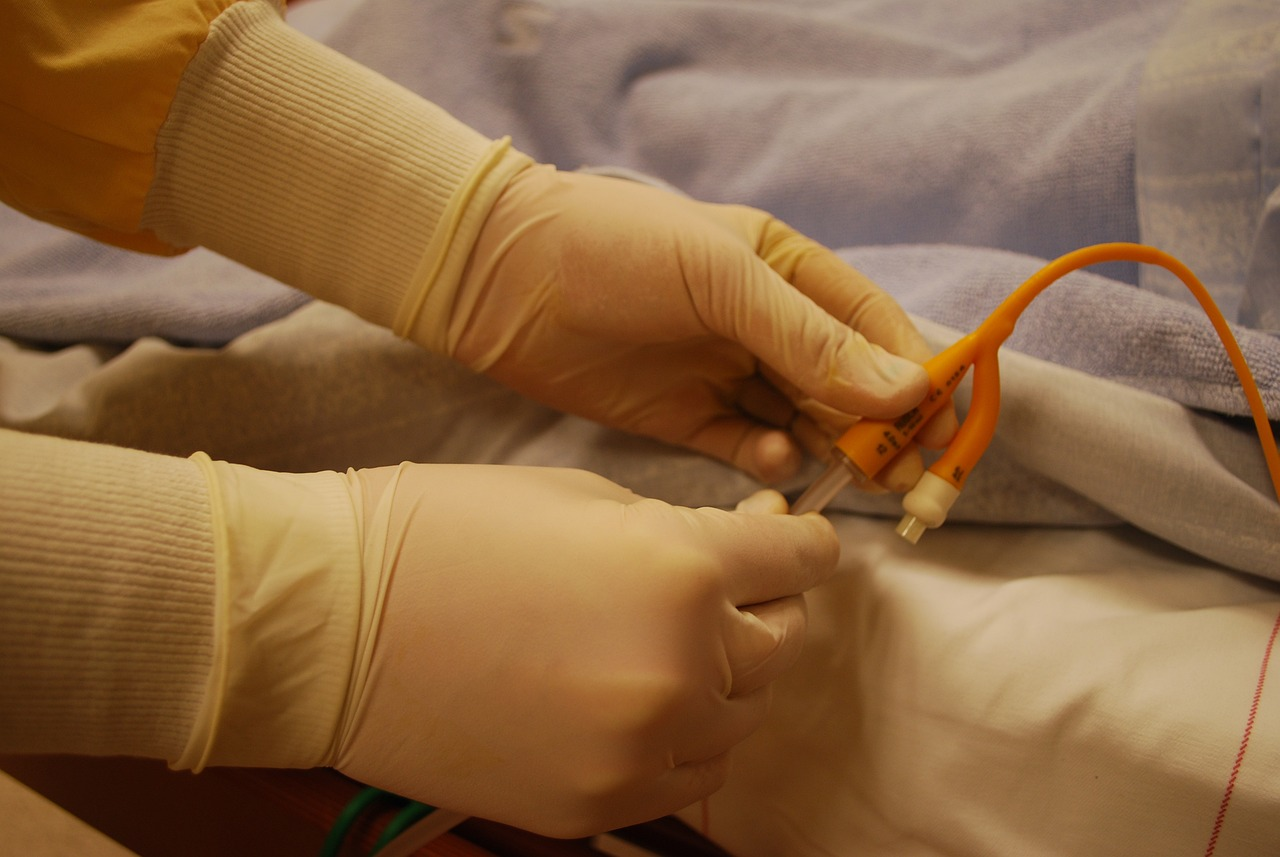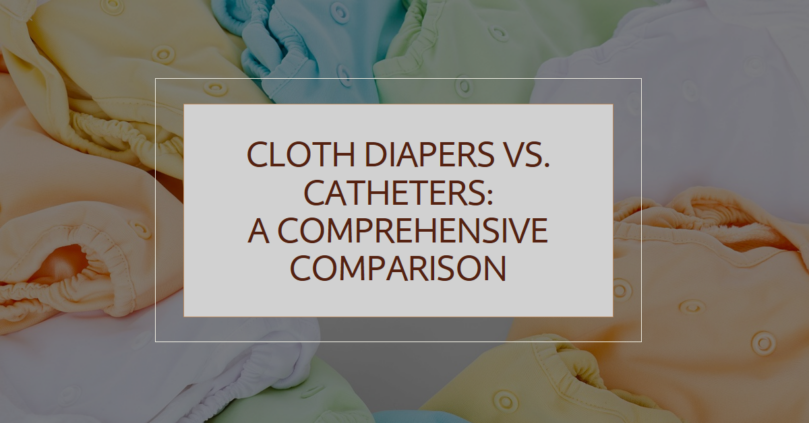One of the numerous changes that come with becoming older is incontinence, often known as unexpected leaking; about 12% of males and 60% of females over 60 deal with urological difficulties.
But incontinence can also be caused by other conditions, such as pregnancy, diabetes, Alzheimer’s disease, prostate surgery, obesity, childbirth, or a transient health condition. When the underlying reason is manageable, incontinence typically only lasts a short while and is easily controlled. Nevertheless, there are instances where it becomes worse and ultimately cannot be treated.
You must make a vital decision when it comes to living a healthy life with incontinence. This involves considering the benefits and drawbacks of the two popular options for managing incontinence: adult cloth diapers and catheters.
What Are Cloth Diapers For Adults?

Cloth diapers are diapers made of fabric and are reusable. They tend to be cotton, wool, or other similar fabrics. No matter what size or shape you need, they are versatile and simple to use repeatedly. The two main parts of a cloth diaper are the inner layer that absorbs liquid and the outer layer that’s waterproof.
These layers’ structure and design separate one brand of adult cloth diaper from another. While some absorbent inlays are integrated, others are detachable.
When you compare cloth diapers and disposable diapers, using adult cloth diapers will save you far more money over time than disposables. You can clean and reuse these adult diapers, unlike their disposal counterparts and catheters.
However, disposable adult diapers also have many perks:
a. Minimizes the outbreak of skin rashes.
b. Innovative designs enable easier usage.
c. Absorbs more fluids.
d. Convenient to use
Pros of Adult Cloth Diapers
- It’s easy to find cloth diapers for adults. They are widely available at supermarkets, convenience stores, and large box retailers. They are even available for purchase online with convenient delivery to your home or workplace.
- The fact that they come in a wide range of sizes, from extra-small to extra-large, is an additional perk.
- You can choose between different absorbency levels. Select light absorbency to accommodate sporadic leakage or maximum absorbency to provide extra protection.
Cons of Adult Cloth Diapers
- Adult underwear, including diapers and pads, can cause skin irritation if not changed often enough.
- Switching out and washing your reusable diapers can further reduce the pleasure of using them. This is particularly true at night when moisture might interfere with a good night’s sleep.
- Also, insurance usually does not pay for adult diapers, which can be quite pricey.
- Leaks can occur from poorly fitting absorbents and low-quality products.
- Lastly, you might notice an embarrassing smell or hear sinking or crinkling.
What Are Catheters?

A urinary catheter is essentially a silicone penile sheath (sometimes called a pipe) that is inserted into the patient’s body as a conduit to drain the bladder and gather urine. Its exposed surface remains concealed beneath the wearer’s garments. Patients with limited movement or those who will only be bedridden for a brief period often have this alternative suggested to them.
Urinary catheters come in various forms, including indwelling, external, and intermittent catheters.
- Intermittent catheters – These catheters, sometimes known as Nelaton or “in/out” catheters, are temporarily placed into the bladder to enable emptying and then taken out.
- Indwelling catheters – They are also termed Foley catheters. The idea is to keep them in the bladder for extended periods.
Due to the numerous adverse effects of employing catheters, a doctor will only recommend a silicone urinary catheter as a last resort to address incontinence.
Pros of Catheters
- Helps bedridden patients empty their bladder.
- Facilitates treatment of urinary tract obstruction.
- Their concealable nature ensures privacy and discretion.
- New designs are soft and pliable for improved comfort.
Cons of Catheters

- Urinary Tract Infections
Most catheter infection cases typically involve treatable urinary tract infections (UTIs). It will substantially impact your overall welfare, given that it can induce considerable discomfort and psychological distress. Because a urinary catheter is essentially a tube, bacteria may enter the body through it and cause infections in the bladder, urethra, or kidneys. Some signs of urinary tract infections (UTIs) brought on by catheter use include aches in the groin or stomach.
- Leakage around catheters
This issue can happen with any indwelling catheter. It may be the result of bladder spasms or the passage of bowel movements. It is an indication that the catheter is blocked in some way. When it comes to indwelling tubes, blood in the catheter is another typical concern.
- Bladder Spasms
When the muscles that surround the bladder tighten or contract, a painful and burning feeling known as a bladder spasm can ensue, typically accompanied by an overwhelming need to pee. This condition might be as uncomfortable as stomach cramps.
- Injury to Several Parts of the Urethra
During their insertion, the catheter might cause damage to some parts of the urethra. Also, since Alzheimer’s patients tend to yank it out owing to their agitation, this is another prevalent concern among those who have the disease.
What Research Says About Catheters

One of the most common types of hospital-acquired infections, per the National Health Safety Network, is catheter-associated urinary tract infections (CAUTIs). They can lead to several serious medical problems, including bacterial endocarditis, pyelonephritis, and urosepsis. Aside from patient safety problems connected with CAUTI conditions, there is rising worry about the incidence of multidrug-resistant infections.
A national study examined how many CAUTIs were caused by pathogens resistant to multiple drugs in long-term acute care hospitals. They found that vancomycin was ineffective against Enterococcus faecalis in 44% of cases recorded in 2010 and Pseudomonas aeruginosa infections in 25% of those cases. At the national level, Urinary tract infections (UTIs) are responsible for at least 13,000 fatalities annually.
Final Verdict
As long as the patient or guardian swaps the diapers frequently and practices good hygiene, adult diapers, in general, are safer for managing incontinence than catheters because the right fabric can stay comfortably over the patient’s body. More essentially, they also don’t cause UTIs.
So, whether you’re a caregiver seeking a suitable incontinence solution to handle a patient’s leakage or a patient dealing with bladder incontinence, we recommend that you forego catheters and use adult diapers instead. Safe, clean, and effective in managing incontinence, they are an excellent choice for most people worldwide.
To get expert advice on which adult diaper is right for you, your condition, and your daily habits, feel free to contact our specialists anytime.
